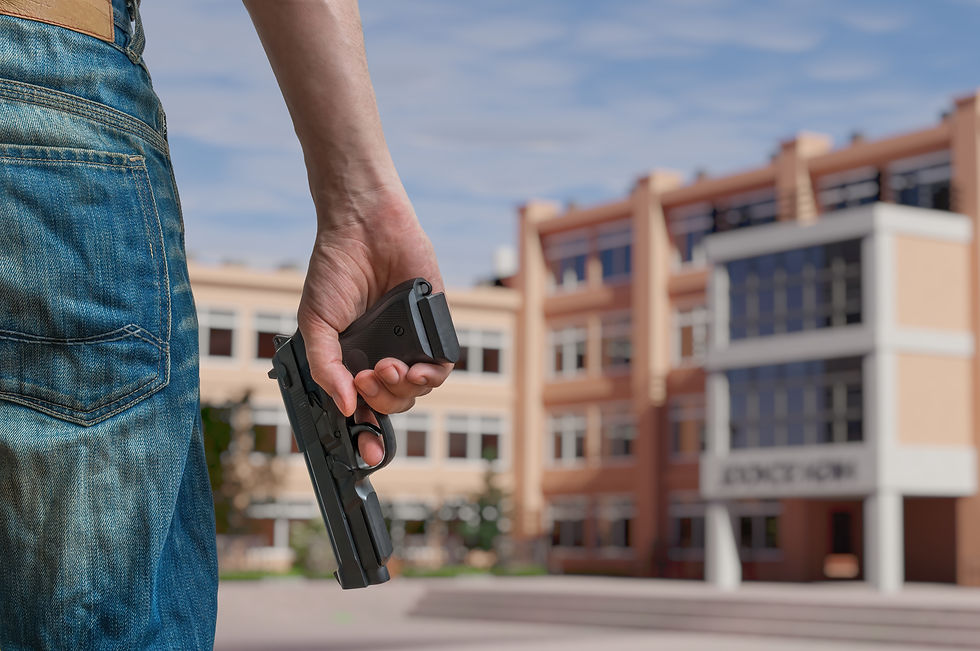Unveiling School Safety: 5 Mind-blowing Techniques to End School Shootings Today!
- gene423
- Jun 17, 2023
- 3 min read

In the aftermath of shocking incidents of school shootings such as the 2012 tragedy in Newtown, Connecticut, the 2013 episode in Centennial, Colorado, and the 2018 event in Parkland, Florida, the question that haunts every parent, student, and educator is, "Could this have been prevented?" The chilling reality is that all these perpetrators had exhibited disturbing behaviors before their attacks, with many missed opportunities for intervention.
As researchers at the Center for the Study and Prevention of Violence at the University of Colorado Boulder, we delve into the circumstances that can lead to such violence and provide actionable strategies to curb these tragedies. The strategies we propose go beyond mere debates about gun control and delve into the social, psychological, and systemic issues at play. Here are five research-backed steps that schools and communities can implement to prevent violence.

1. Encourage Reporting of Warning Signs
Our research reveals that most school shooters exhibited concerning behavior and even communicated their intention to harm others before their deadly attack. This disturbing behavior provides crucial opportunities for adults and peers alike to step in and provide help to students in emotional distress.
According to the U.S. Secret Service, the top ten concerning behaviors among school attackers include: threats to target or others, escalating anger, interest in weapons, signs of depression or isolation, changes in behavior or appearance, signs of self-harm or suicidal tendencies, complaints about being bullied, worries over grades or attendance, and harassment of others.
The key here is to establish educational programs that encourage people to share their concerns and seek help for individuals displaying these concerning behaviors. Schools should focus on creating an environment where every student feels comfortable and safe reporting such behavior.
2. Develop and Publicize Anonymous Tip Lines

To facilitate reporting, people need safe channels to voice their concerns. Anonymous tip lines, encompassing phone numbers, websites, emails, and apps, offer students and others a confidential avenue to share concerns about threatening behavior or communications.
Take, for instance, Colorado's Safe2Tell initiative. Born in the wake of the 1999 Columbine High School mass shooting, this live reporting system allows individuals to relay their concerns to local law enforcement officials and school leaders, who subsequently investigate and address each tip accordingly.
3. Implement Behavioral Threat Assessment and Management

Once concerns are reported, it's crucial for relevant professionals to assess these reports and decide on the best course of action. A method known as behavioral threat assessment and management can help identify the root cause of concerning behavior, such as a grievance, psychological trauma, or mental health concern.
In schools, this process encourages the threat assessment team to evaluate the risk for violence and build a plan for supporting and monitoring the student. Importantly, schools that use this approach are less likely to suspend or expel the students, allowing them to continue receiving services and support.
4. Strengthen Mental Health Support and Services in Schools
Our fourth strategy underscores the need for improved mental health services in schools. Students dealing with psychological or emotional distress may struggle in isolation, making it imperative for schools to provide readily available and effective mental health support.
This could take the form of in-school counseling services, mental health awareness programs, or partnerships with local mental health agencies. Schools should prioritize creating a mental health-friendly environment where students feel comfortable seeking help.
5. Foster a Culture of Inclusion and Respect
Finally, the school environment can play a significant role in preventing potential violence. Cultivating a culture of respect and inclusion helps students feel valued and less isolated. Encourage open dialogues about diversity, respect for individual differences, and the importance of treating everyone with kindness and understanding.
Moreover, schools should proactively address bullying. Implementing strict anti-bullying policies and educating students on the harmful effects of bullying can create a more inclusive, supportive environment that decreases the risk of violence.
Conclusion
We aren't helpless bystanders in the face of school violence. While the debates about gun control are important, it's crucial to remember that there are more immediate, actionable strategies we can implement to make our schools safer. By being proactive, paying attention to warning signs, and creating an environment of inclusion and respect, we can potentially prevent tragedies and ensure our schools are safe havens for learning and growth.
Remember, it's not just about reacting to threats; it's about proactively creating an environment where students feel understood, supported, and safe. As a community, we can and must do better to protect our children from violence. This change starts with us.
Our work as sociologists at the Center for the Study and Prevention of Violence is focused on providing these practical, research-based solutions to prevent violence in schools. However, they can only be successful if schools, parents, and communities work together to implement them consistently and effectively. The time for action is now.







Comments